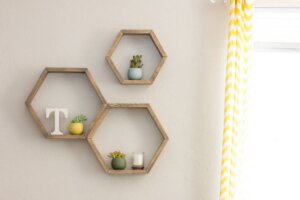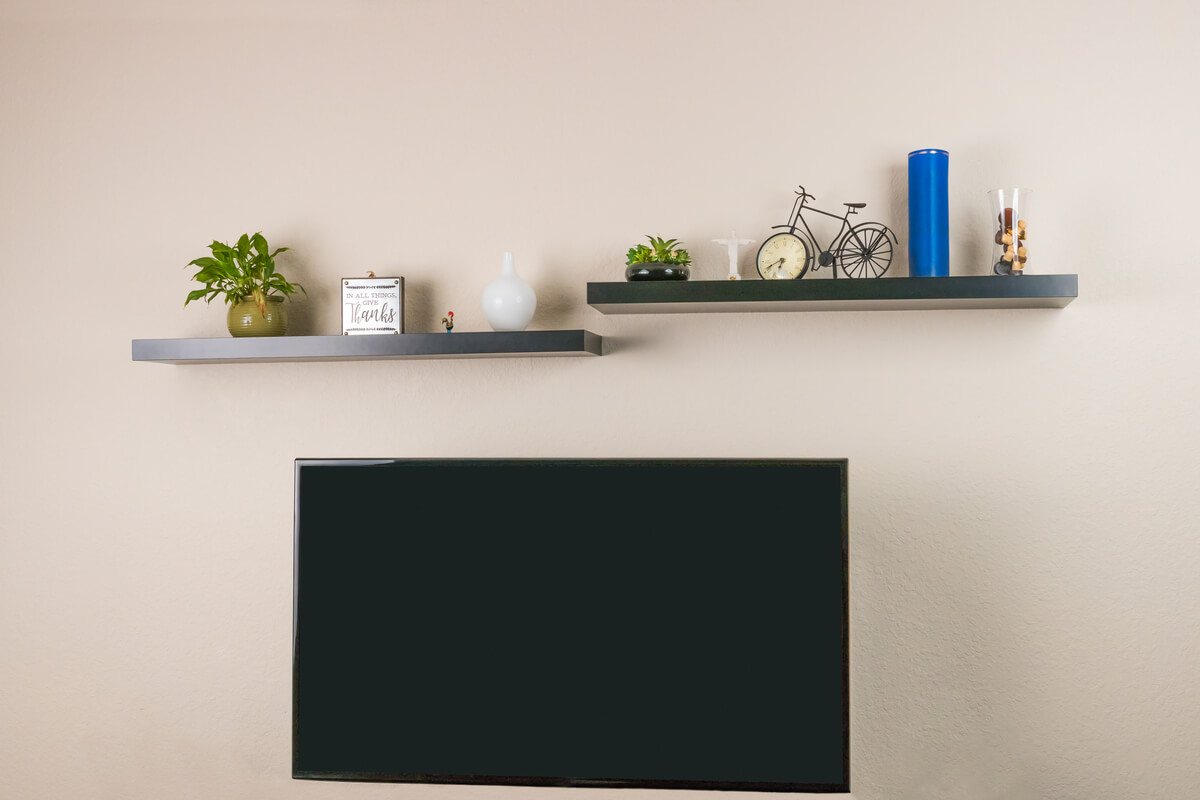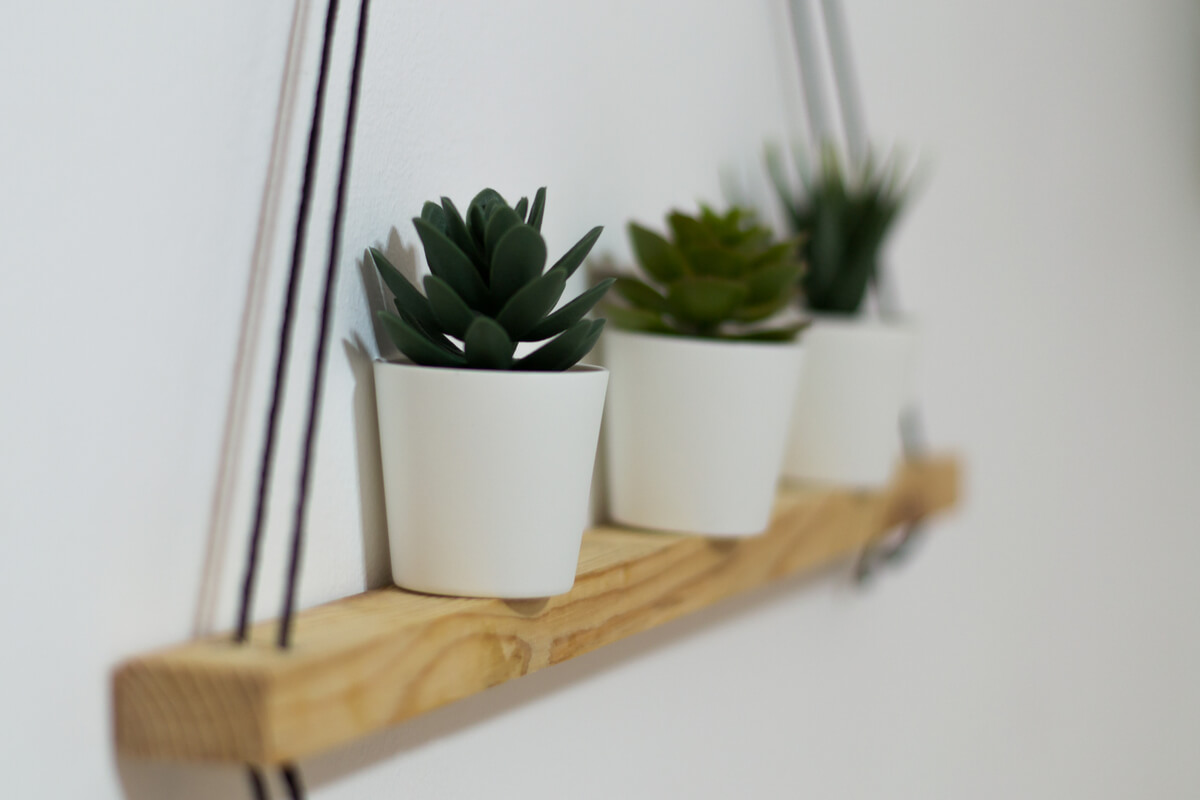Floating Shelves: A New Trend in Decoration

Innovation becomes one of the objectives that we usually set for interior design. When we have to choose resources and furniture, we tend to resort to the most common prototypes; However, in the following article, we’re going to analyze floating shelves, a new trend in decoration.
On more than one occasion, we have doubts about where to place a plant, a vase, books, etc. It can be difficult to arrange certain elements and distribute them coherently, but due to the format of the house or the lack of space, we’re a little more limited.
In this regard, interesting ideas arise to furnish the home without losing functional capacity. The idea is that we know what we can use and what we can’t use, taking into account that everything must be organized without anything becoming an obstacle to internal transit.
Floating shelves, what are they?

When describing what floating shelves are, we must take into account that, first of all, they won’t occupy a space in the lower part of a space, but rather higher up; in other words, they don’t have any type of support legs on the ground.
Therefore, a better use of the room is produced. Floating shelves are placed in corners, holes, or simply on the wall. This new trend is gaining ground on traditional shelves, basically because of the facilities it offers and the aesthetic effect it generates.
Floating shelves offer an original and more modern image. However, you may wonder how to hang them, as there’s no visible structural support system. This formula is very interesting for current homes that follow a minimalist, contemporary, or avant-garde style.
An innovative resource that opens a new aesthetic vision in the house.
Types of floating shelves
There are different types on the market. We ourselves can organize them as we see fit. They’re hung individually and independently of one another, hence, we can work on them according to the aesthetic objective that we want to achieve. Let’s see some examples:
- One of the most common cases is that of shelves that are separated from each other and form a 90º angle with the wall. They’re hung with squares or hooks and can be perfectly adapted to any part of a room.
- We also have shelves that have an unequal scheme, where several shelves are joined to form a single resource; In other words, different compartments are established that work to divide sections and configure an organic system.
- Depending on the geometric shapes we’re looking for, we can find them in rectangular, circular, triangular, or even sinuous formats. These formulas allow us to energize the environment by producing a sensation of greater originality and by generating a new design.
- Wooden shelves are the most common; in fact, the previous ones are usually made of this material. Just the same, we have other options, such as metal ones. These are shelves made with fine iron or steel rods that are very functional. They can usually be found in offices.
Hanging rope shelves

To offer an image that combines simple, traditional, and natural vibes, we have hanging rope shelves, an aesthetic approach that’ll attract the eye thanks to their originality.
We can make them ourselves; it’s all a matter of having a bit of imagination and attaching a rope with knots on each of the shelves. In order for them to hang correctly, you have to make sure that they’re well attached to the wall or ceiling and, above all, that they’re not in areas where there are drafts.
This way, a look is achieved that’s different from what we generally find in houses. Furthermore, they don’t take up too much space and become a very interesting decorative piece: They look great in bedrooms or study rooms.
Where to place floating shelves
As previously mentioned, there are different arrangements, but if we want them to receive more prominence, we can use them, for example, above the headboard of the bed, next to the television in the living room, to complete the corners of the living room, behind your office desk, etc.
Basically, there are multiple possibilities and they all contribute positively to the atmosphere of the space and create an attractive reference point. For this reason, it’s important that we try to establish the right coordination and combination with the rest of the furniture.
Innovation becomes one of the objectives that we usually set for interior design. When we have to choose resources and furniture, we tend to resort to the most common prototypes; However, in the following article, we’re going to analyze floating shelves, a new trend in decoration.
On more than one occasion, we have doubts about where to place a plant, a vase, books, etc. It can be difficult to arrange certain elements and distribute them coherently, but due to the format of the house or the lack of space, we’re a little more limited.
In this regard, interesting ideas arise to furnish the home without losing functional capacity. The idea is that we know what we can use and what we can’t use, taking into account that everything must be organized without anything becoming an obstacle to internal transit.
Floating shelves, what are they?

When describing what floating shelves are, we must take into account that, first of all, they won’t occupy a space in the lower part of a space, but rather higher up; in other words, they don’t have any type of support legs on the ground.
Therefore, a better use of the room is produced. Floating shelves are placed in corners, holes, or simply on the wall. This new trend is gaining ground on traditional shelves, basically because of the facilities it offers and the aesthetic effect it generates.
Floating shelves offer an original and more modern image. However, you may wonder how to hang them, as there’s no visible structural support system. This formula is very interesting for current homes that follow a minimalist, contemporary, or avant-garde style.
An innovative resource that opens a new aesthetic vision in the house.
Types of floating shelves
There are different types on the market. We ourselves can organize them as we see fit. They’re hung individually and independently of one another, hence, we can work on them according to the aesthetic objective that we want to achieve. Let’s see some examples:
- One of the most common cases is that of shelves that are separated from each other and form a 90º angle with the wall. They’re hung with squares or hooks and can be perfectly adapted to any part of a room.
- We also have shelves that have an unequal scheme, where several shelves are joined to form a single resource; In other words, different compartments are established that work to divide sections and configure an organic system.
- Depending on the geometric shapes we’re looking for, we can find them in rectangular, circular, triangular, or even sinuous formats. These formulas allow us to energize the environment by producing a sensation of greater originality and by generating a new design.
- Wooden shelves are the most common; in fact, the previous ones are usually made of this material. Just the same, we have other options, such as metal ones. These are shelves made with fine iron or steel rods that are very functional. They can usually be found in offices.
Hanging rope shelves

To offer an image that combines simple, traditional, and natural vibes, we have hanging rope shelves, an aesthetic approach that’ll attract the eye thanks to their originality.
We can make them ourselves; it’s all a matter of having a bit of imagination and attaching a rope with knots on each of the shelves. In order for them to hang correctly, you have to make sure that they’re well attached to the wall or ceiling and, above all, that they’re not in areas where there are drafts.
This way, a look is achieved that’s different from what we generally find in houses. Furthermore, they don’t take up too much space and become a very interesting decorative piece: They look great in bedrooms or study rooms.
Where to place floating shelves
As previously mentioned, there are different arrangements, but if we want them to receive more prominence, we can use them, for example, above the headboard of the bed, next to the television in the living room, to complete the corners of the living room, behind your office desk, etc.
Basically, there are multiple possibilities and they all contribute positively to the atmosphere of the space and create an attractive reference point. For this reason, it’s important that we try to establish the right coordination and combination with the rest of the furniture.
All cited sources were thoroughly reviewed by our team to ensure their quality, reliability, currency, and validity. The bibliography of this article was considered reliable and of academic or scientific accuracy.
- Ventura, Anna: 1000 ideas prácticas en decoración del hogar, Universe Publishing, 2003.







